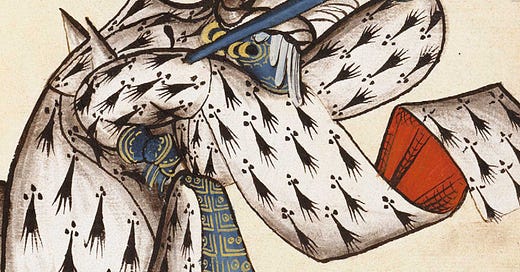Having watched a great many films and television shows, and having tried for many years to get one made, I have something of a vested interest in the decline of the pre-eminent narrative media of our times (given that both literature and theatre died long before film). Having identified the following five foundational—and interconnected—reasons why modern films and television shows are so poor, I’d like to share them with you.
1. The Kali Yuga has no Art. Ultimately, it is no great mystery why films and television shows are all now forgettable junk, any more than it is a mystery why books, music, clothing, civic services, takeaway food and idle conversations are all such poor quality. Society is tumbling and it is bringing everything down with it. Just as a living culture expresses itself in all its activities, in forms of life, so a dying culture does, in forms of death. These forms do not just include the paintings, books and cartoons of the world, but the infrastructure, the institutions and the people that make them. Human beings, particularly those in a position to create culture, are denatured infants, with barely enough passion to get out of bed in the morning, let alone reach into the abyss and draw immortality from it. Comparing the faces, the behaviour and the thoughts of today’s writers, actors and directors with those of the 1970s is like placing a modern new-build next to a Georgian cottage. It is no surprise that nobody who values quality wishes to live in the latter, when the former will soon be rubble.
2. No Life to Reflect in Art. Art has long had trouble reflecting an artless world back to its inhabitants. Today however men and women, living alone in hyper-mediated environments, drained of all natural reality, can barely be said to live at all, which makes it practically impossible to make drama of their lives. The rise in ‘body horror’ is one consequence of this, indeed of shallow shock horror more generally, along with absurdly unrealistic romance, action-adventure and the like. Instead of real things happening to real people, unreal things happen to cyphers and to crude caricatures of people living in the same spectacular shadow-world as their creators. This isn’t to say that only gritty realism has value, but even the wildest flights of fantasy must be rooted in the unique magic of everyday reality, and the dramatic impulses of real people, or they become shallow, derivative and inconsequentially silly. In this respect, one notes how impoverished dialogue has become in modern films, how flat, awkward and expositional, because people speak to each other less and less and have forgotten how to. The spontaneity of genius likewise does not exist in our dystopian world, including in the dystopian world of the author’s soul, nor does vivid character, nor does profound meaning, nor does the natural, erotic, gendered body and so they do not find their way onto the screen. If they do, they seem most peculiar. Or troubling, as honesty always does.
3. Decline in Craft. Professional writers and directors then, like the characters they endeavour to create, are spiritless replicants leading uninteresting lives with people they barely speak to, and certainly not about anything vital. This is bad enough, but they are also incompetent. They do not possess any real knowledge of their craft—much less a profound understanding of their culture—and so cannot create good stories, vivid characters or engaging dialogue, even if a moment of inspiration impels them to try. In most cases, professional directors and screenwriters owe their position to nepotistic connections, cultural capital and an ability to leverage their race, gender or ideological credentials, which—along with the quality-corrupting fact that the arts are now completely dominated by the middle classes—explains why so many films are distorted by ideological messaging. Again, this has, in a sense, long been so — the unspoken cult of consumption, the sacred value of professionalism and the religion of unfeeling despair (manifest as emotionally cold anti-heroes played by Clint Eastwood, William Hurt and Ryan Gosling) have been the unspoken background to the manufactured goods of the cultural machine since its inception. But ideological conformity did not in the past completely supersede craft, for the simple reason that you had to make a product that reached a certain level of competence, otherwise it wouldn’t be consumed. No longer.
4. Quality a Hindrance. The business model of streaming services is, astonishingly, actually based on producing mediocrity. That is what it is supposed to do. In the past, audience popularity was not the only ‘metric’ upon which future investment was based, but it was still very important. This dependence on the market was itself a guarantor of mediocrity, pandering, as it had to, to mass taste—which cannot abide nuance, difficulty, radical criticism or tragedy—but it ensured that good stories, which are perennially popular, at least had a chance. Today, by contrast, streaming services, which cater to global audiences of hundreds of millions, use algorithms to determine which films will appeal to a vast, pathologically distracted audience. Modern viewers have a crippled attention span and rarely watch films all the way through, and so choose movies which comfortably fit with their distracted expectations. New releases must therefore fit generic search queries, appeal to generic desires and match generic expectations of what a good film will be (appeal to nostalgia + stellar cast + favoured genre: and of course nothing controversial, such as sex). Movies are no longer an artistic experience, to bring quality attention to, nor even, as they were until recently, a release valve, but merely a background white noise to whatever else you are doing on your device. They are therefore commissioned on this basis. This is why, ultimately, the story is unimportant, why the acting is unimportant, why the meaning is unimportant, why countless films are produced that look the same and feel the same, why hyperbolic ‘blitz marketing’ and fake reviews are so important (as word of mouth can no longer be relied on), why ‘what a film is about’ has to be short and simple enough to fit in a tweet or text message, and why films are no longer taut, because it matters not if they are ninety minutes or ninety hours long, just as long as they are easily-digested, unchallenging, uncontroversial and non-confrontational, do not threaten our power to consume, and do not remind us of the dead natural world, our lost culture or the bodies we no longer experience or enjoy.
5. The Place Where Story Used to Be. With no story to tell, and no characters to tell it, film-makers must rely on surrogates for narrative meaning, principally exposition—having characters tell us why something or other is important, or why it happened, or what they feel or what have you—and pornographic titillation—rapid cuts, swooping crane shots, hypercrisp lighting, over-saturated colours, needless CGI (everywhere), absurdly over-choreographed ‘Matrix-like’ action scenes and production gimmicks (such as the whole film shot in one take). ‘Discerning’ professional-class viewers prefer a slightly different palette of titillating effects—glacial pacing, lack of affect and desaturated colours—but the motivation is the same; concealing artistic truth. In the past, flesh (along with gore and overt pretension) would be used to cover over the hole where story should be, but in our prudish times, lazy explanations of how you should feel and technological effects prodding you to get excited about nothing at all are preferred. Once again, none of this is new in principle—second-rate films have always used sex, violence, rapid cuts and exciting special effects to conceal mediocrity. What has changed, in a world in which experience plays no role, is the ubiquity of exposition and titillation. As AI takes over the role of film-production (reflecting a ‘real world’ also managed by AI) this will not only worsen but it will, at the same time, be noticed by fewer and fewer people.





